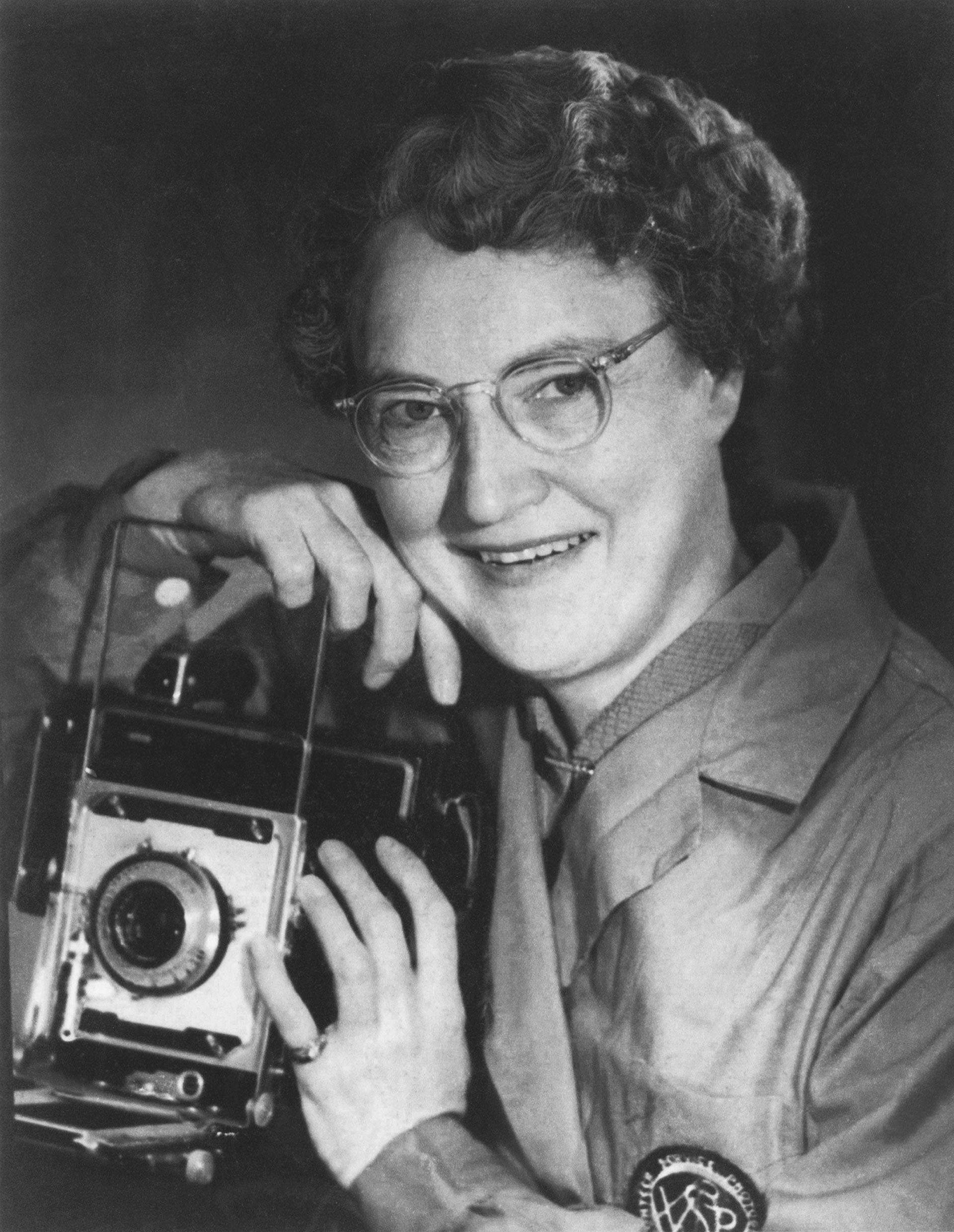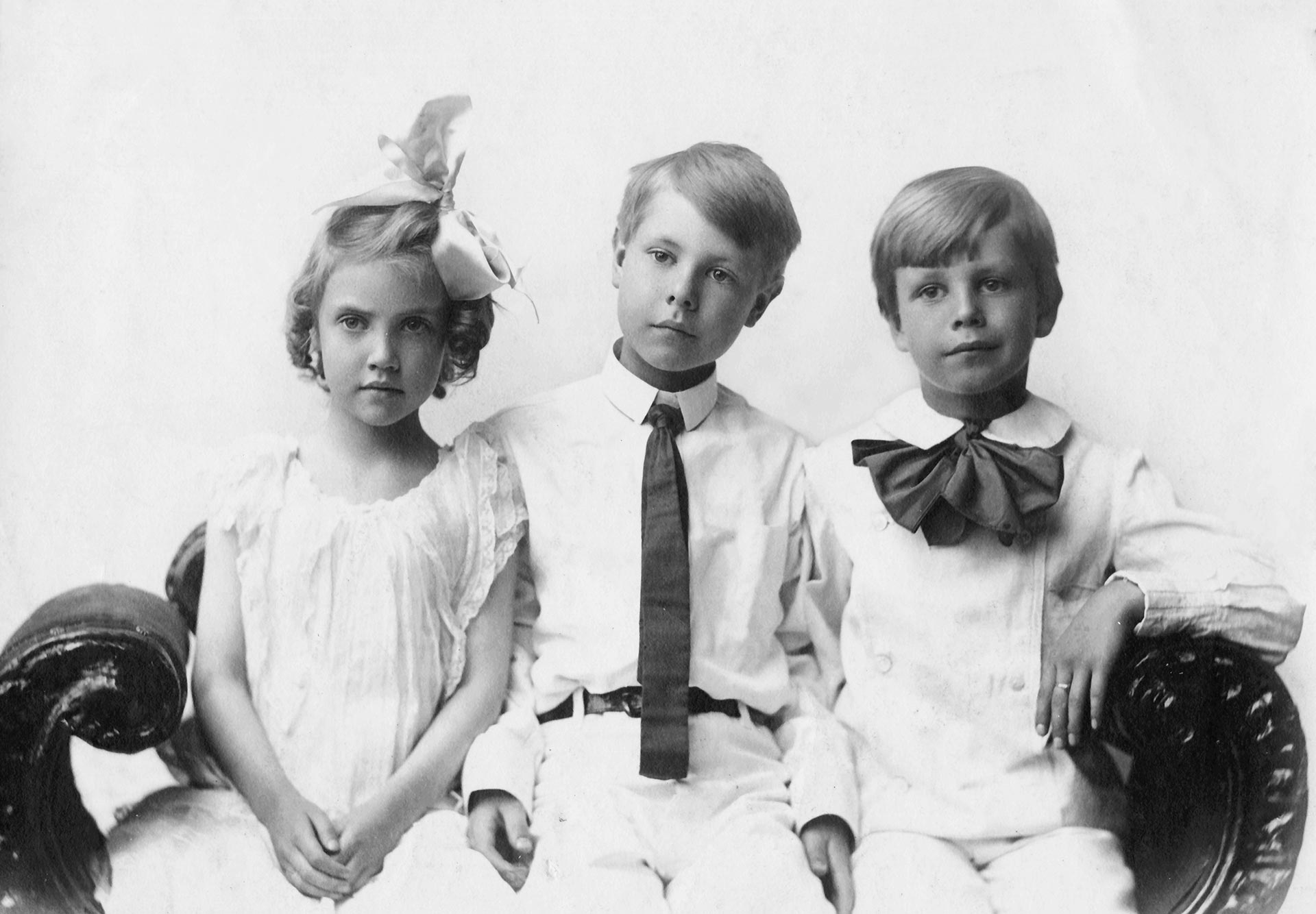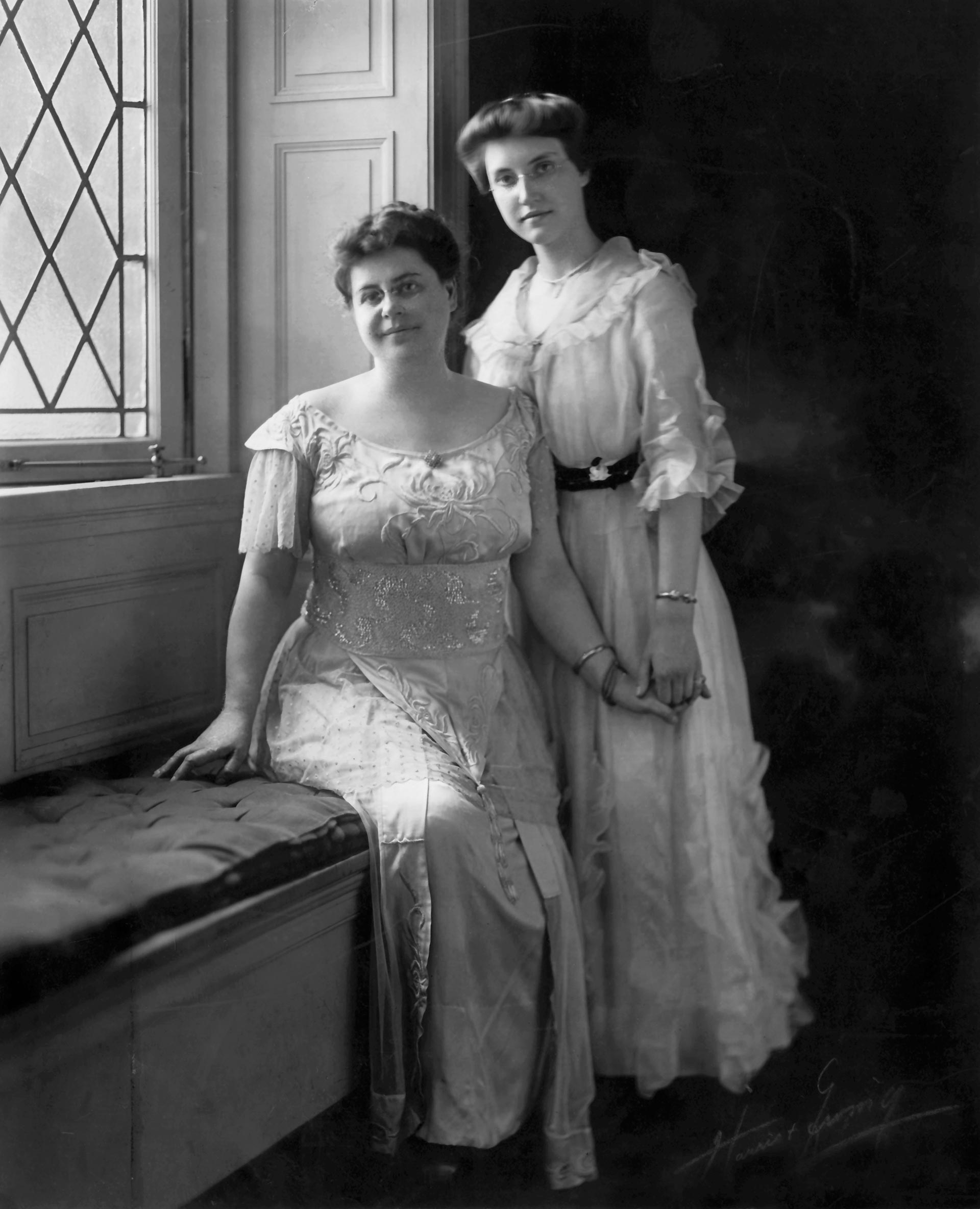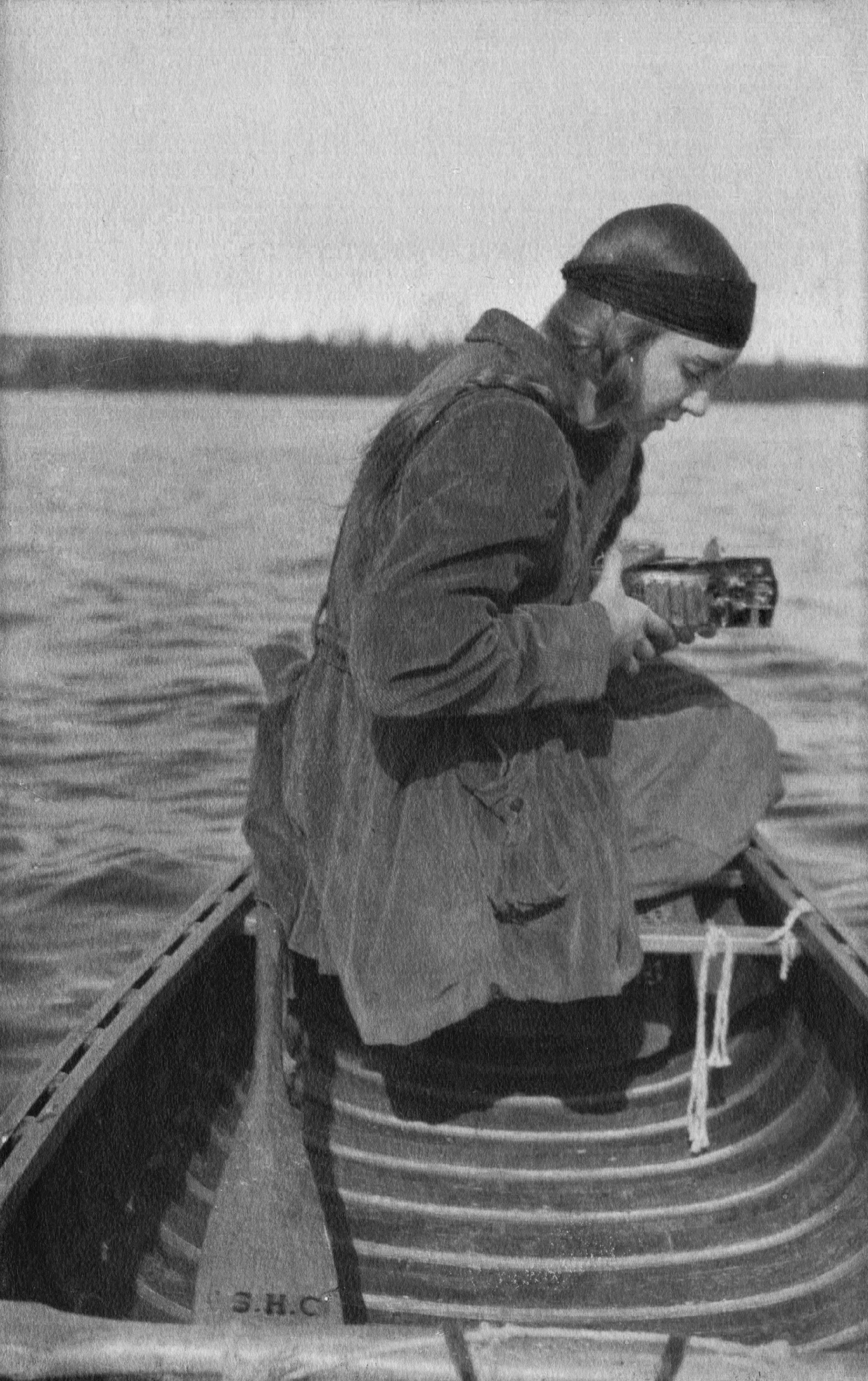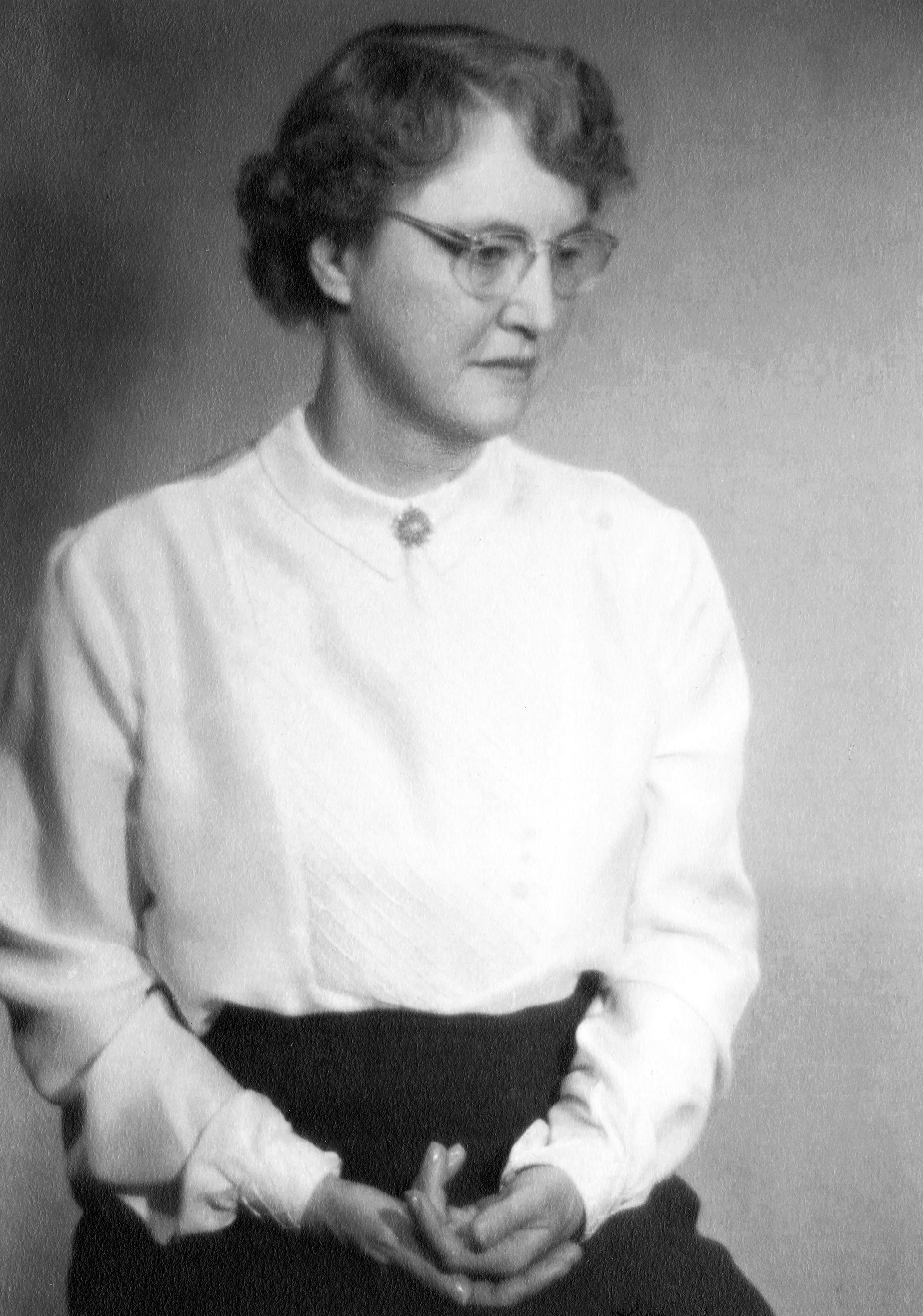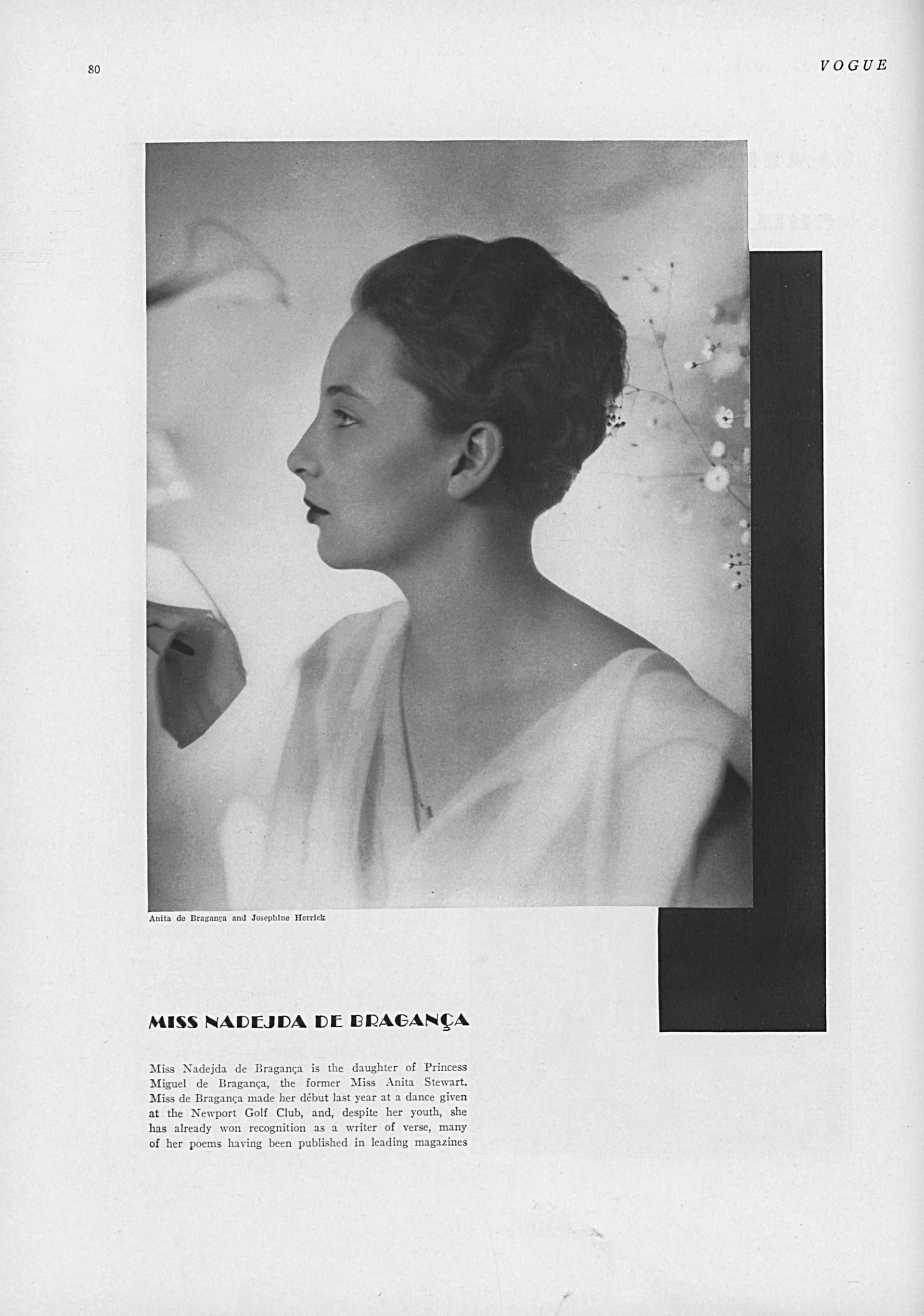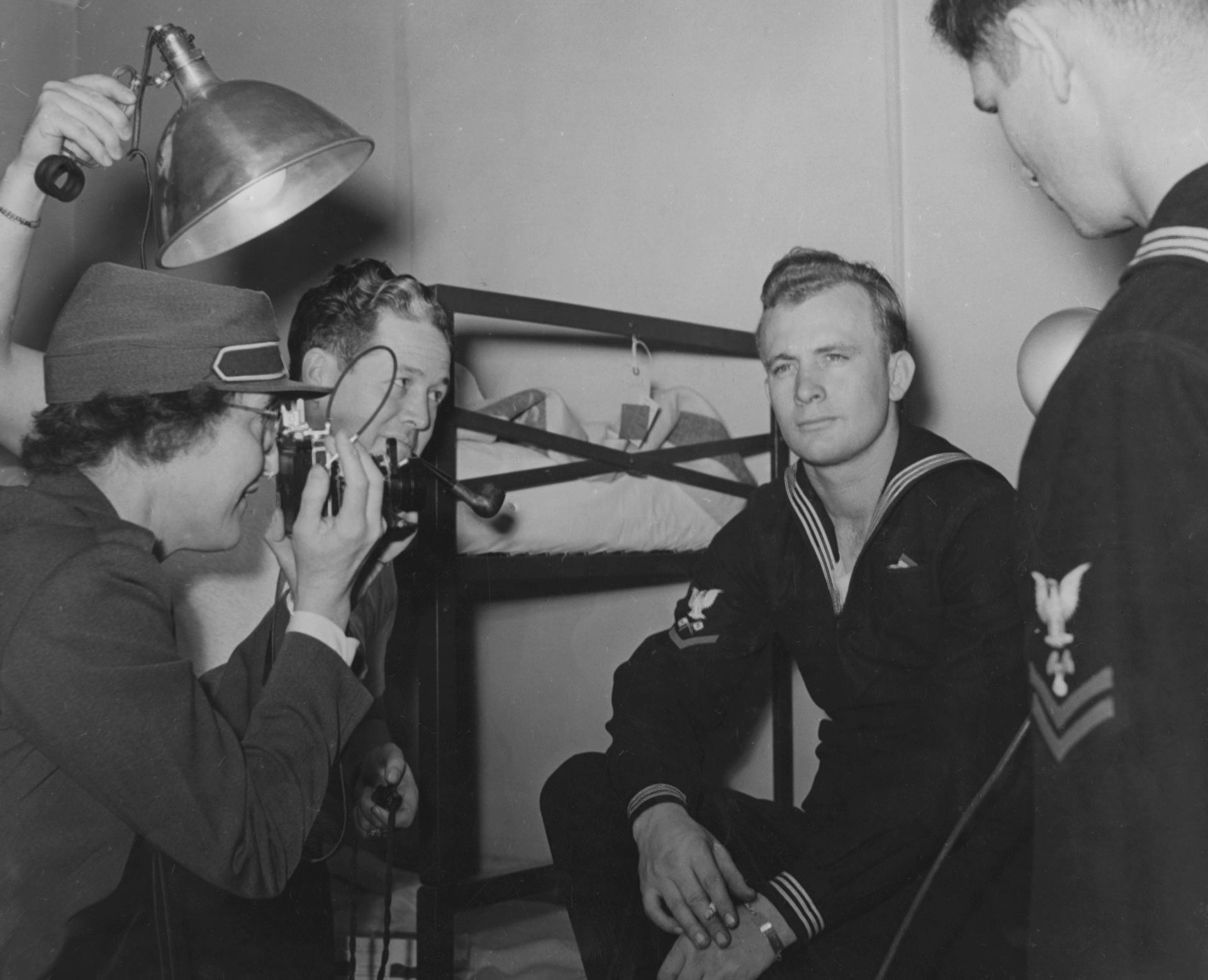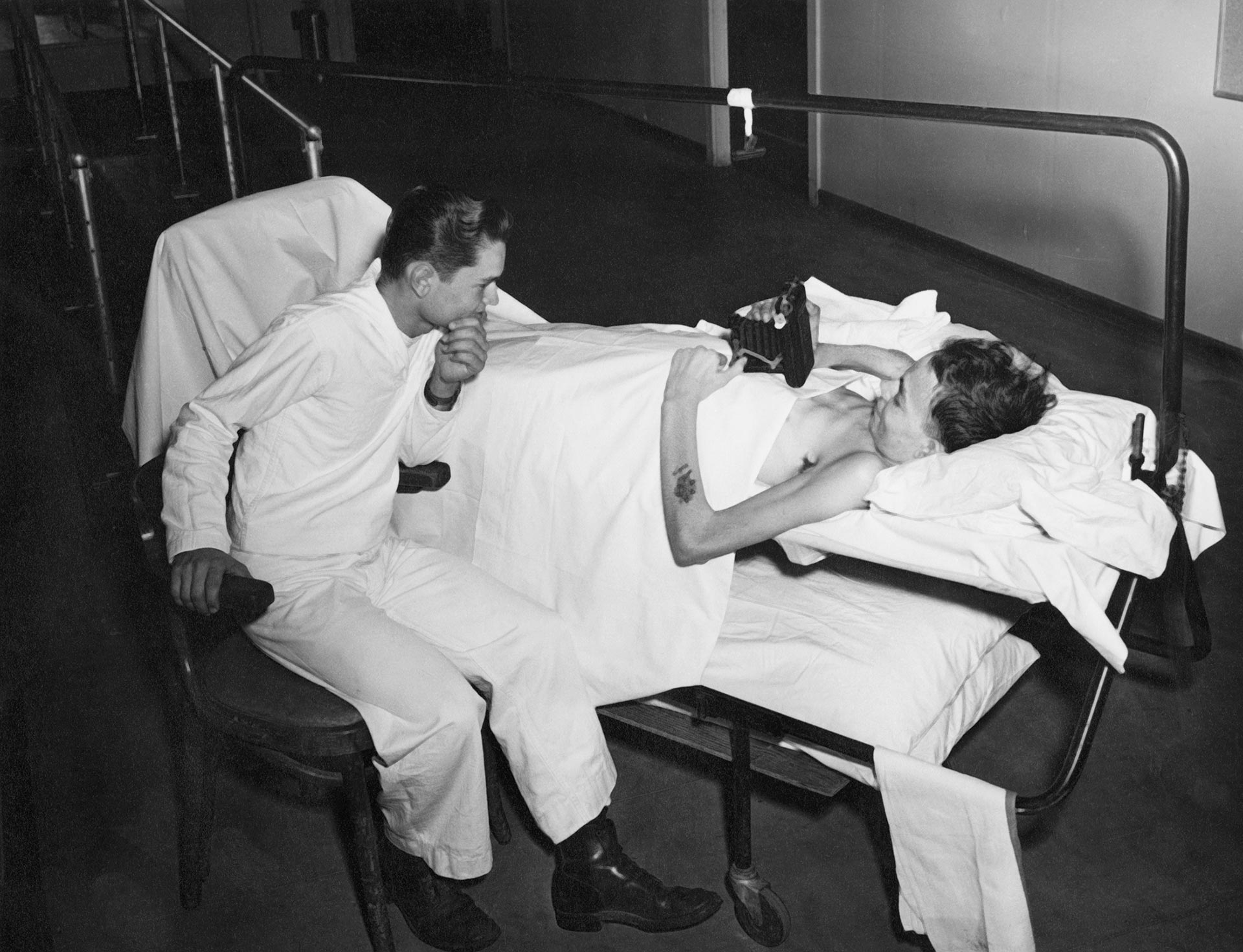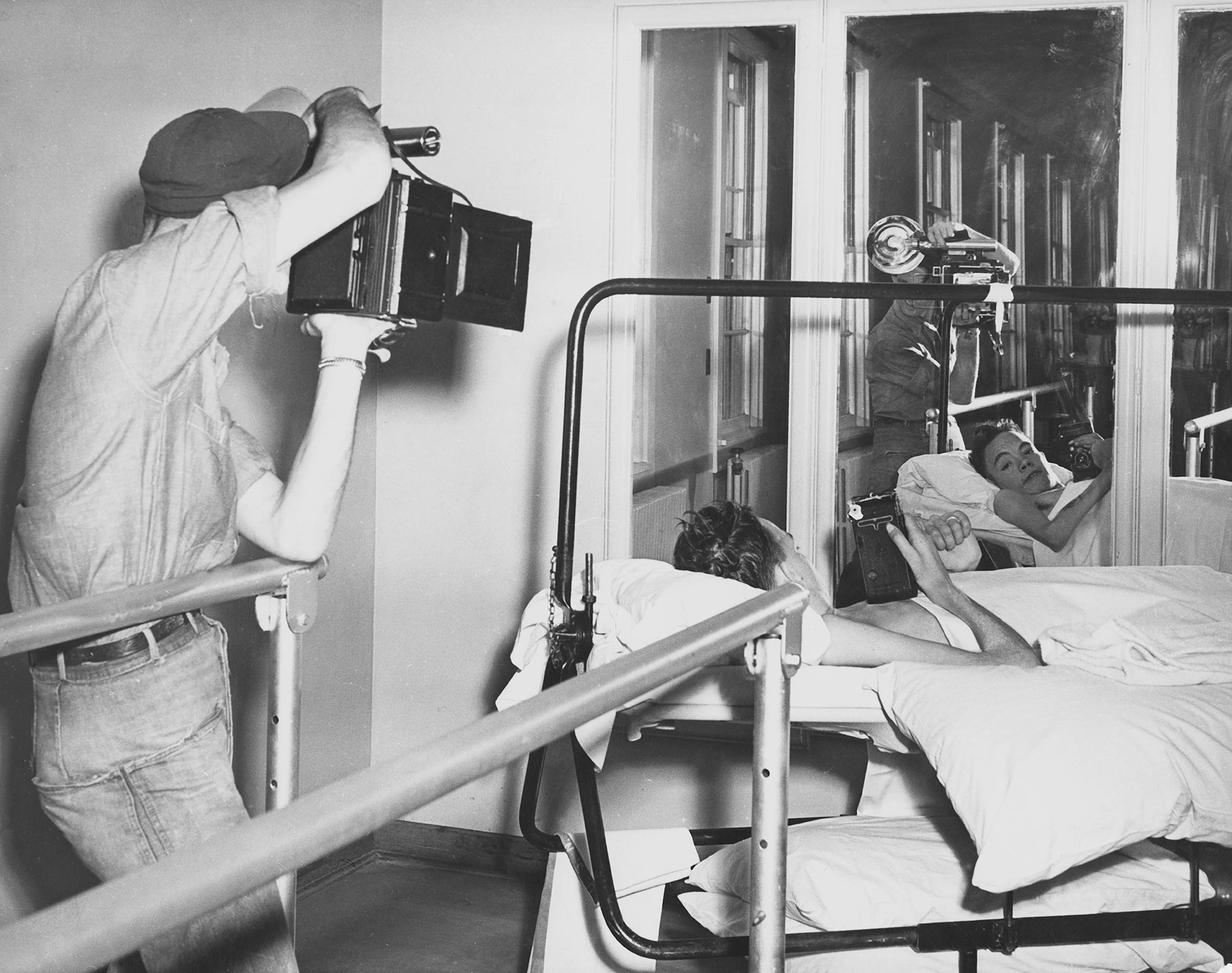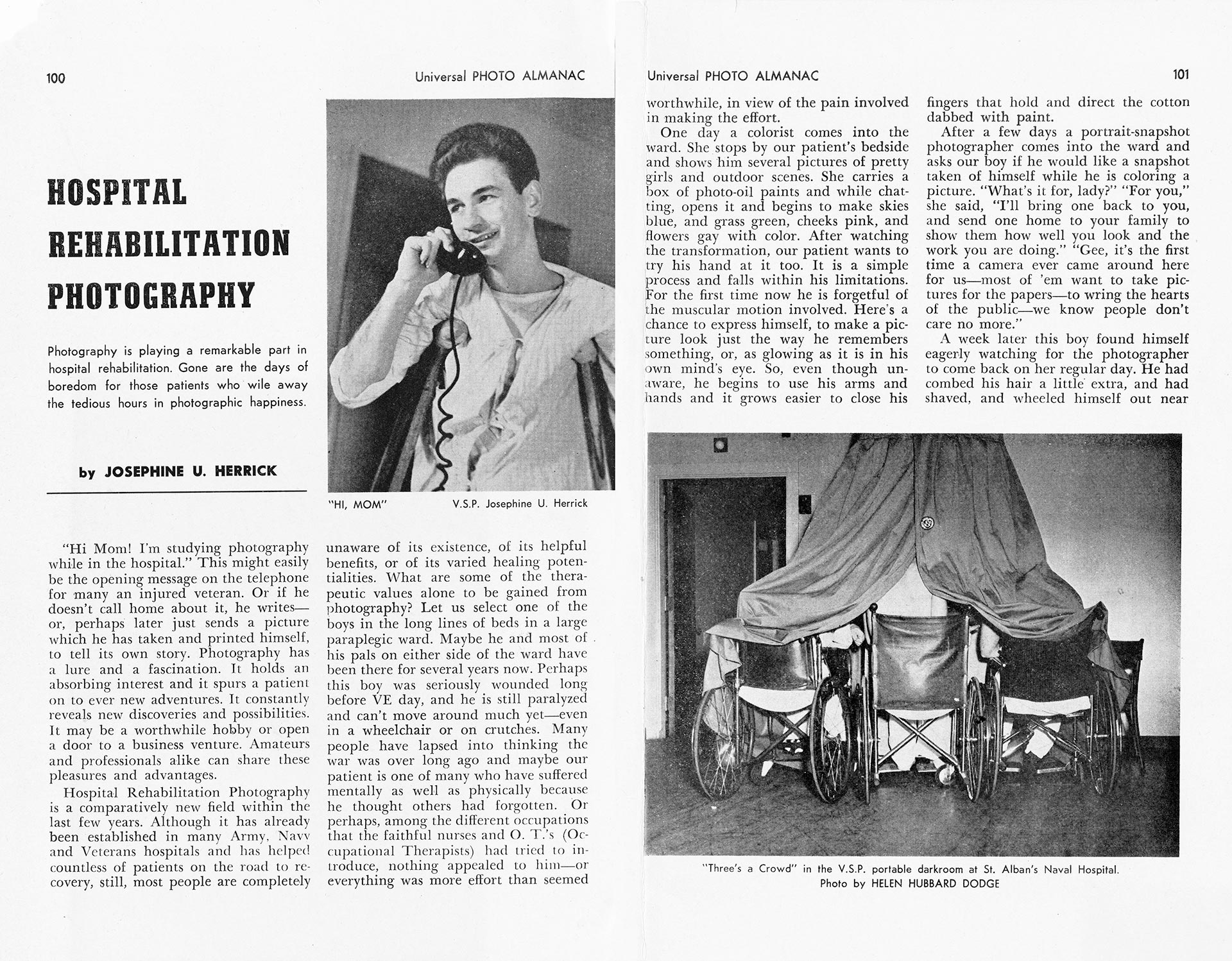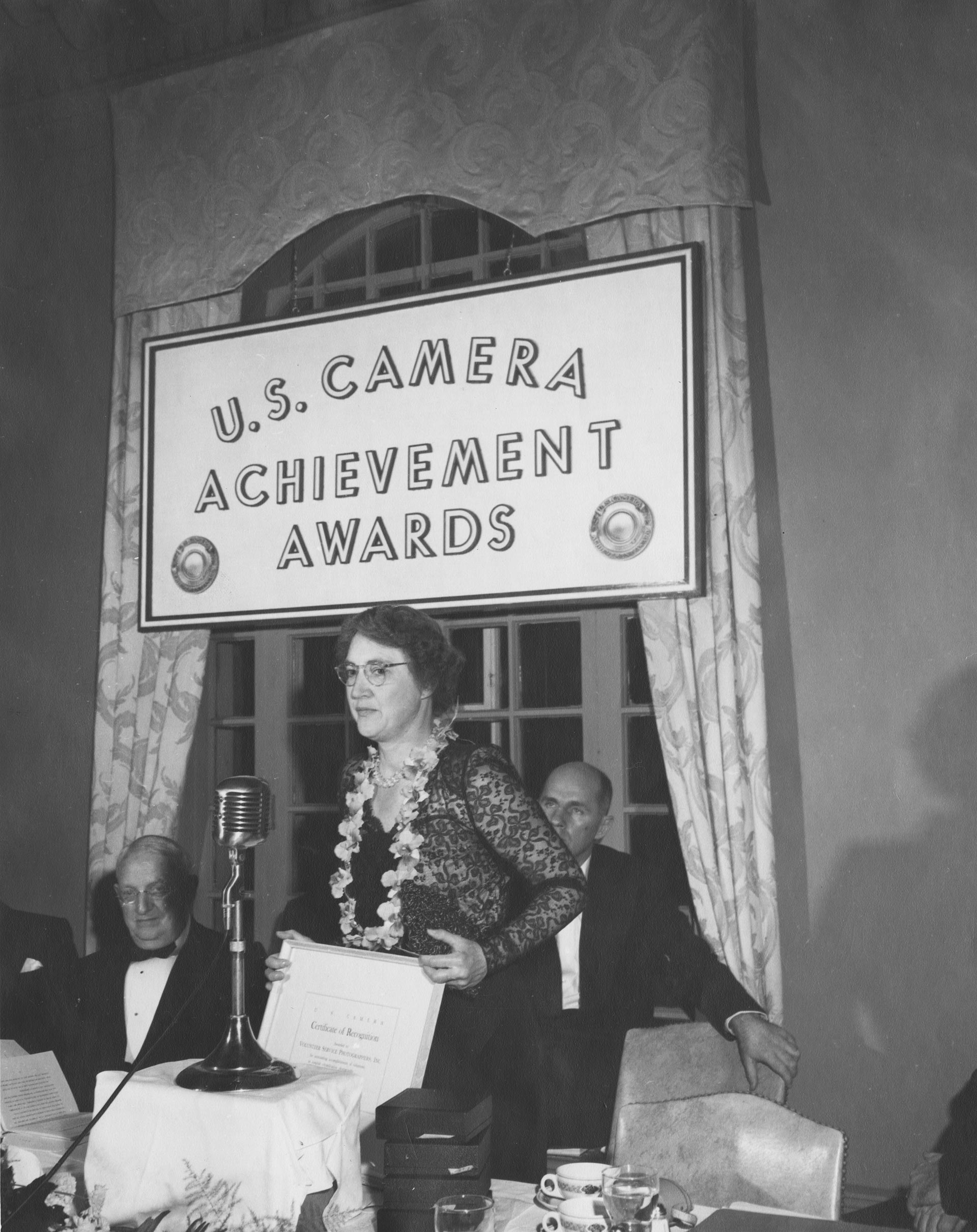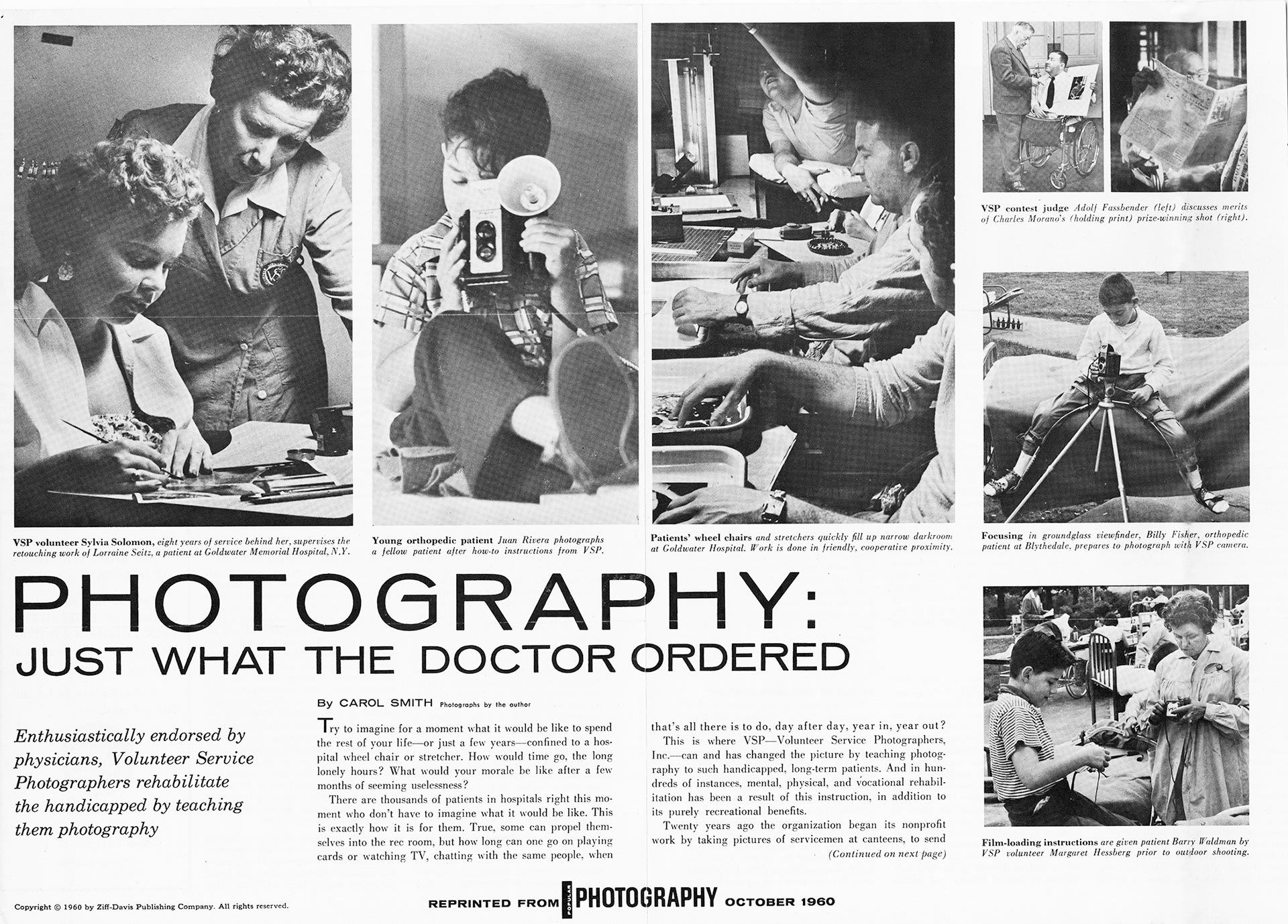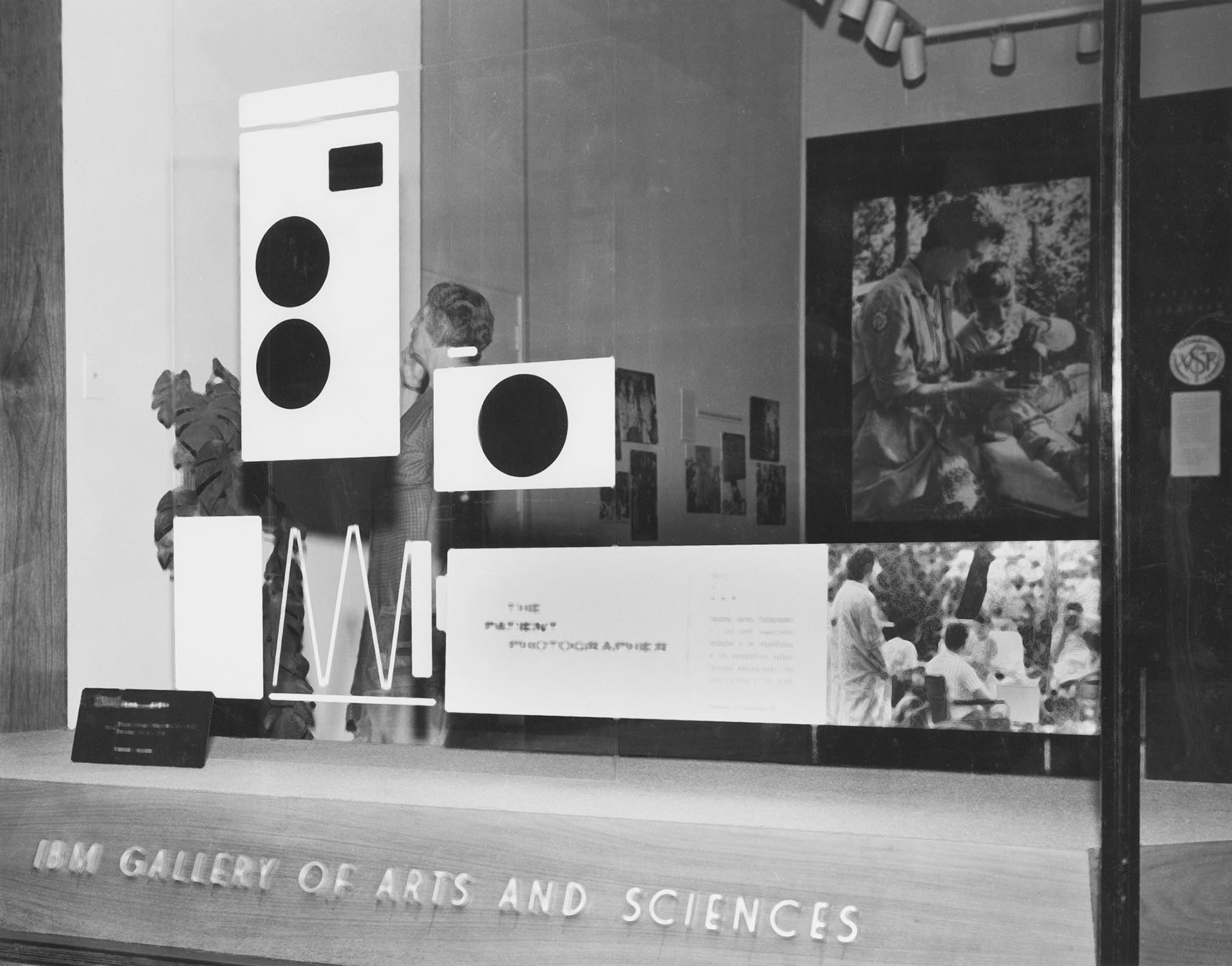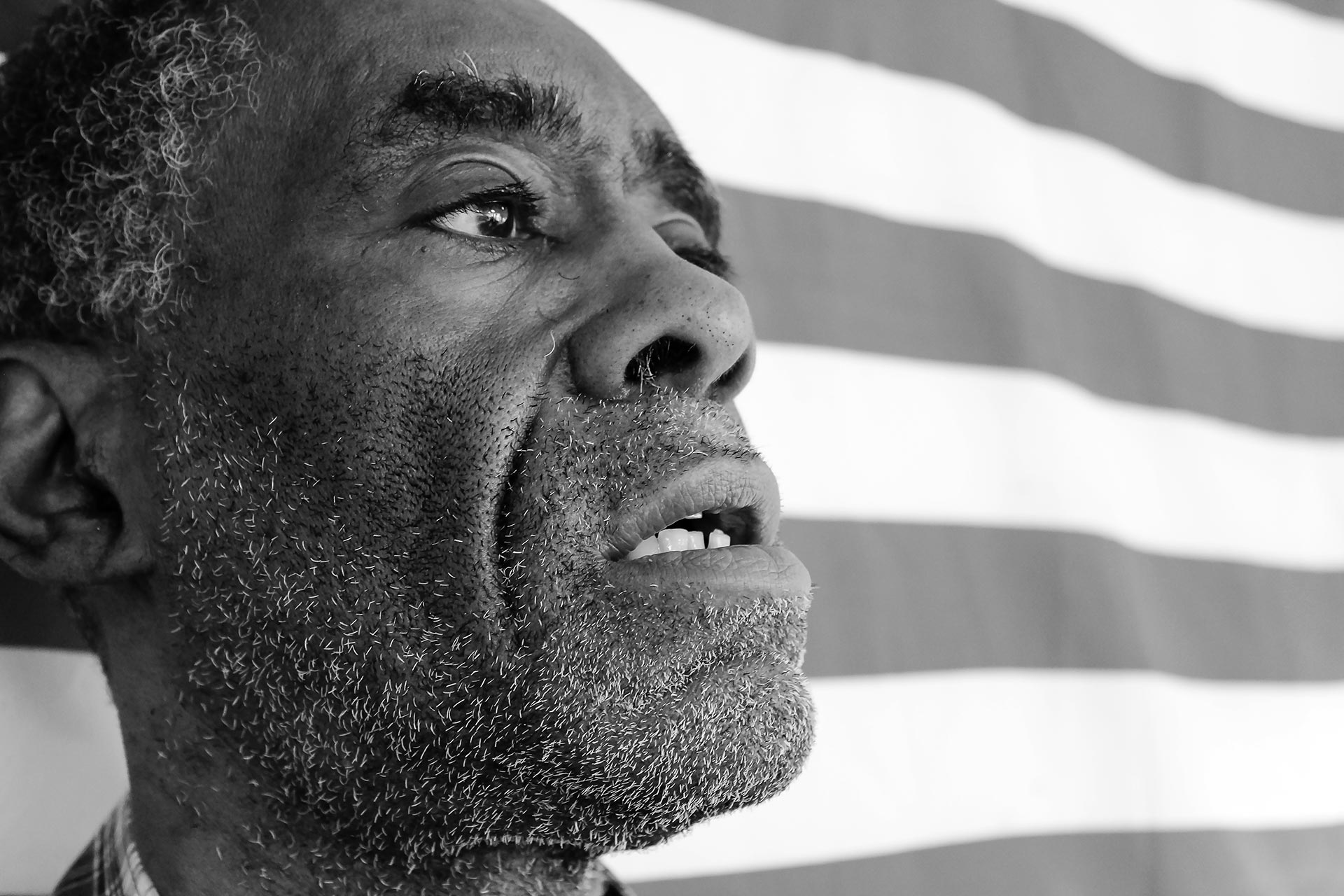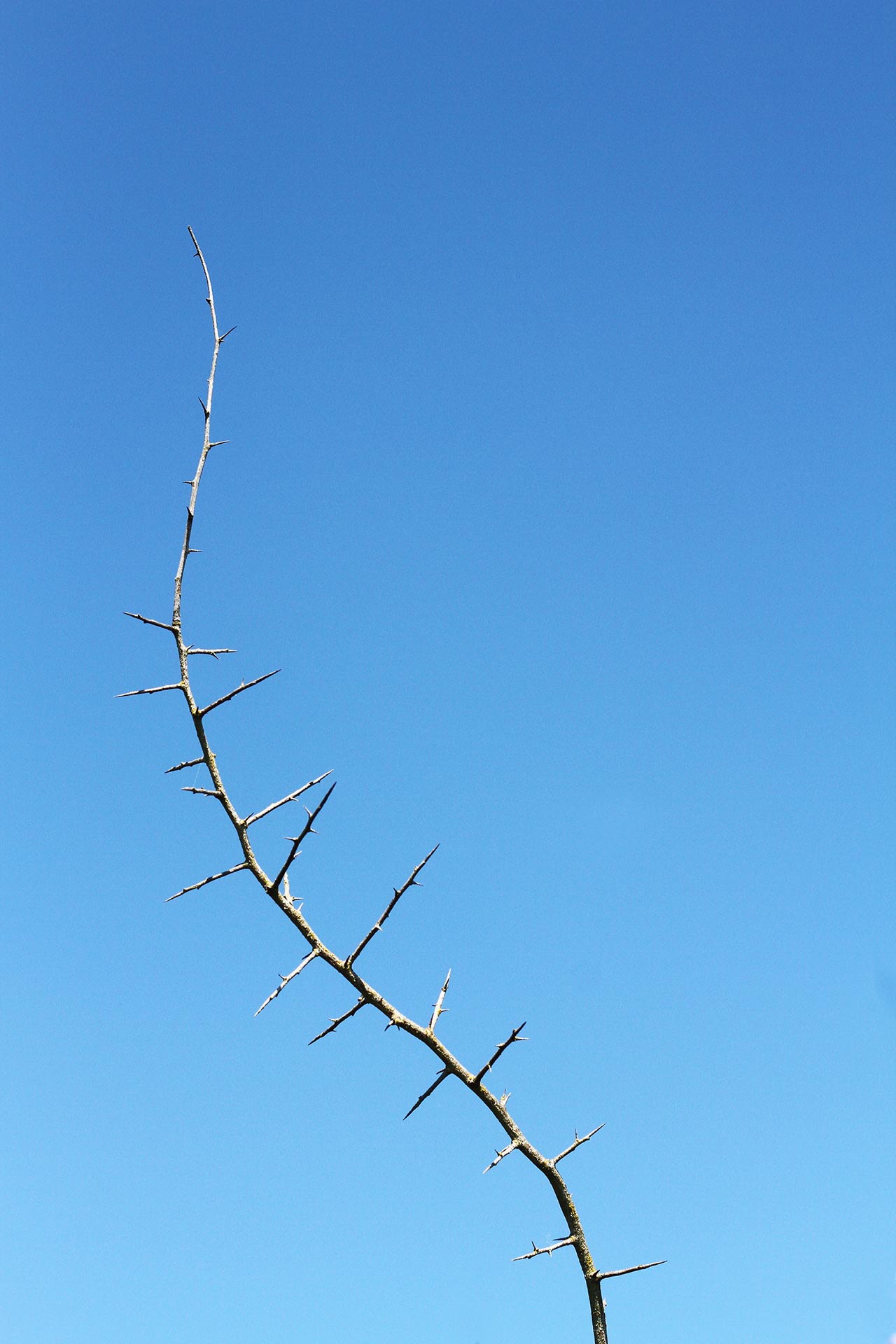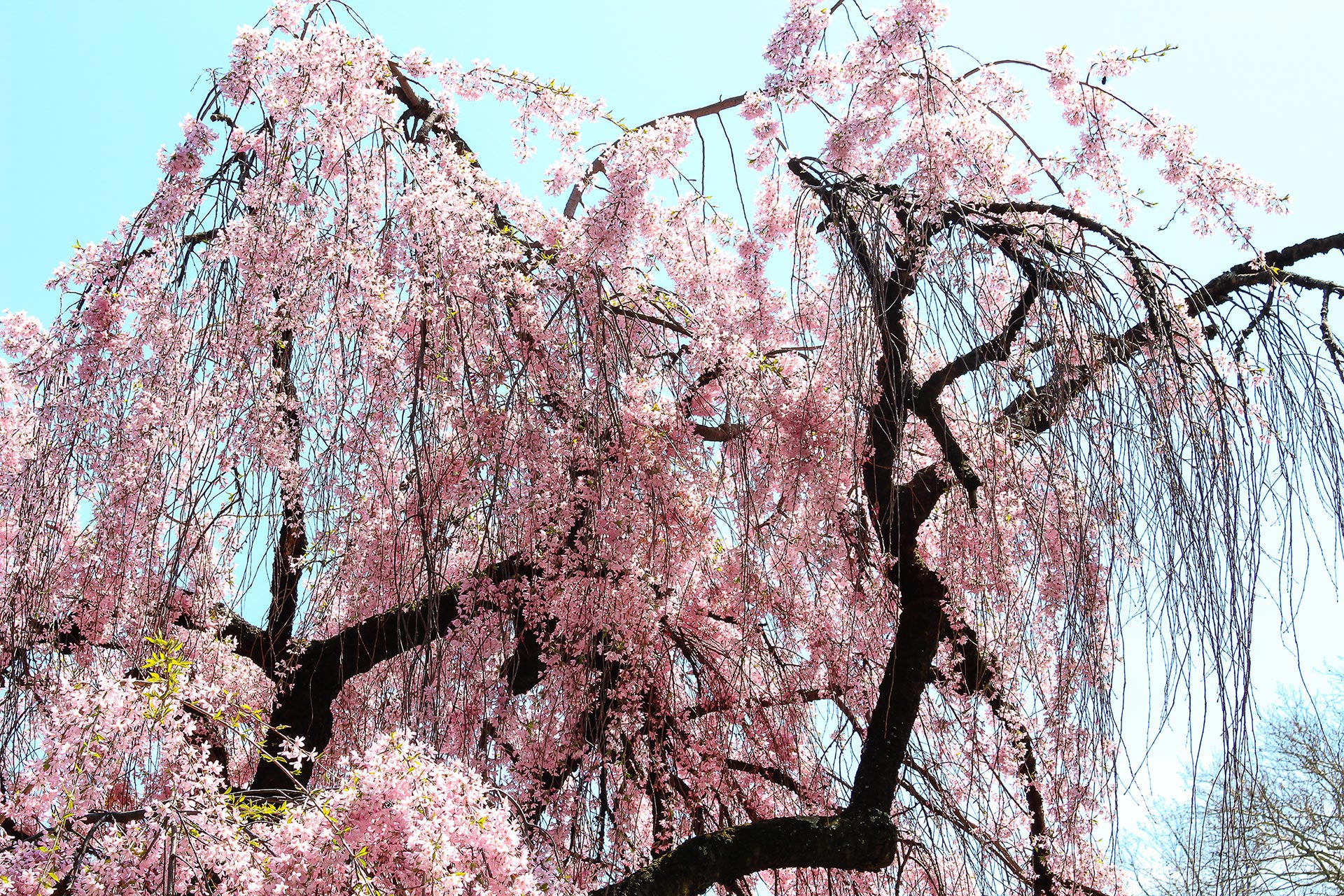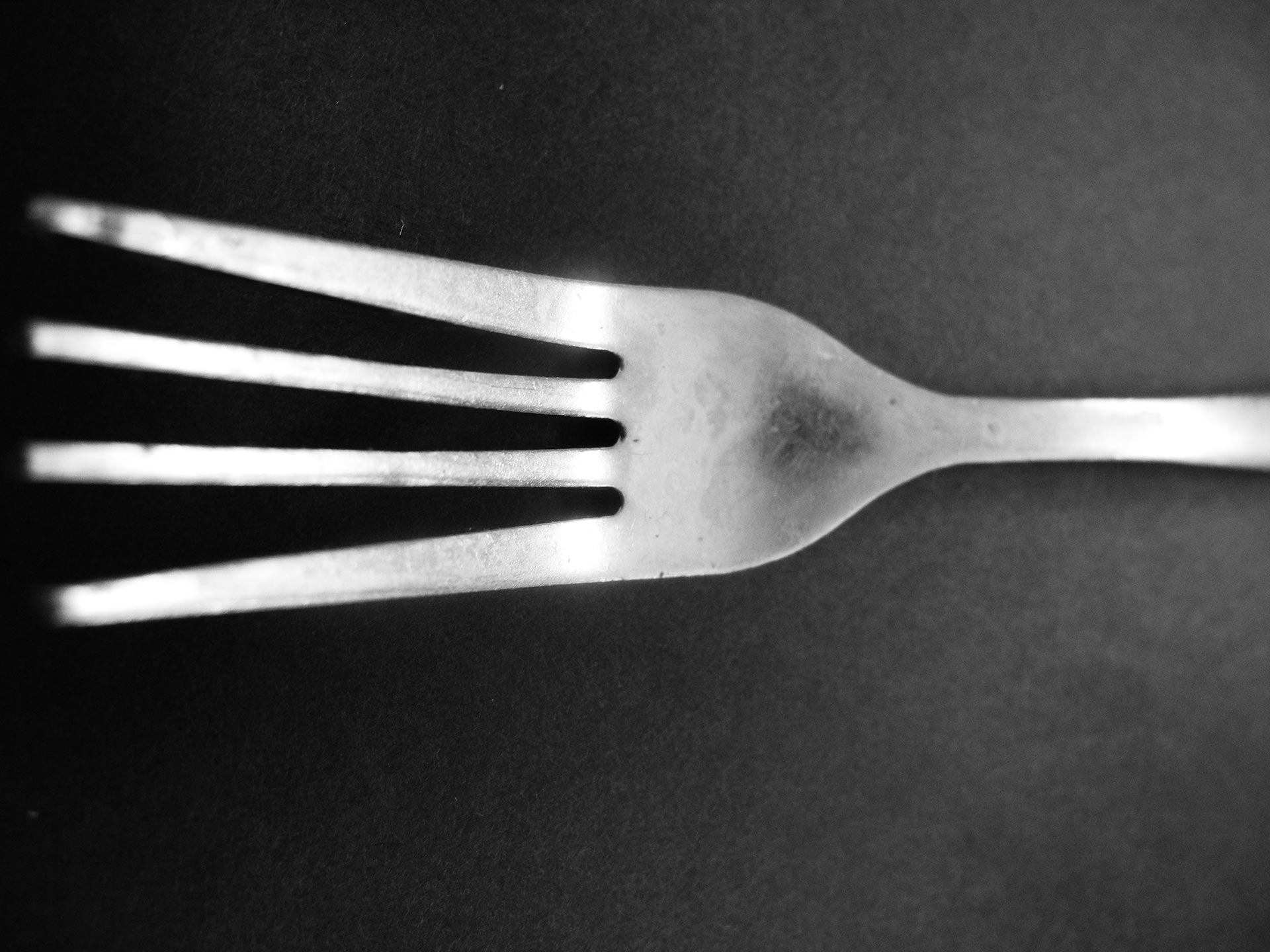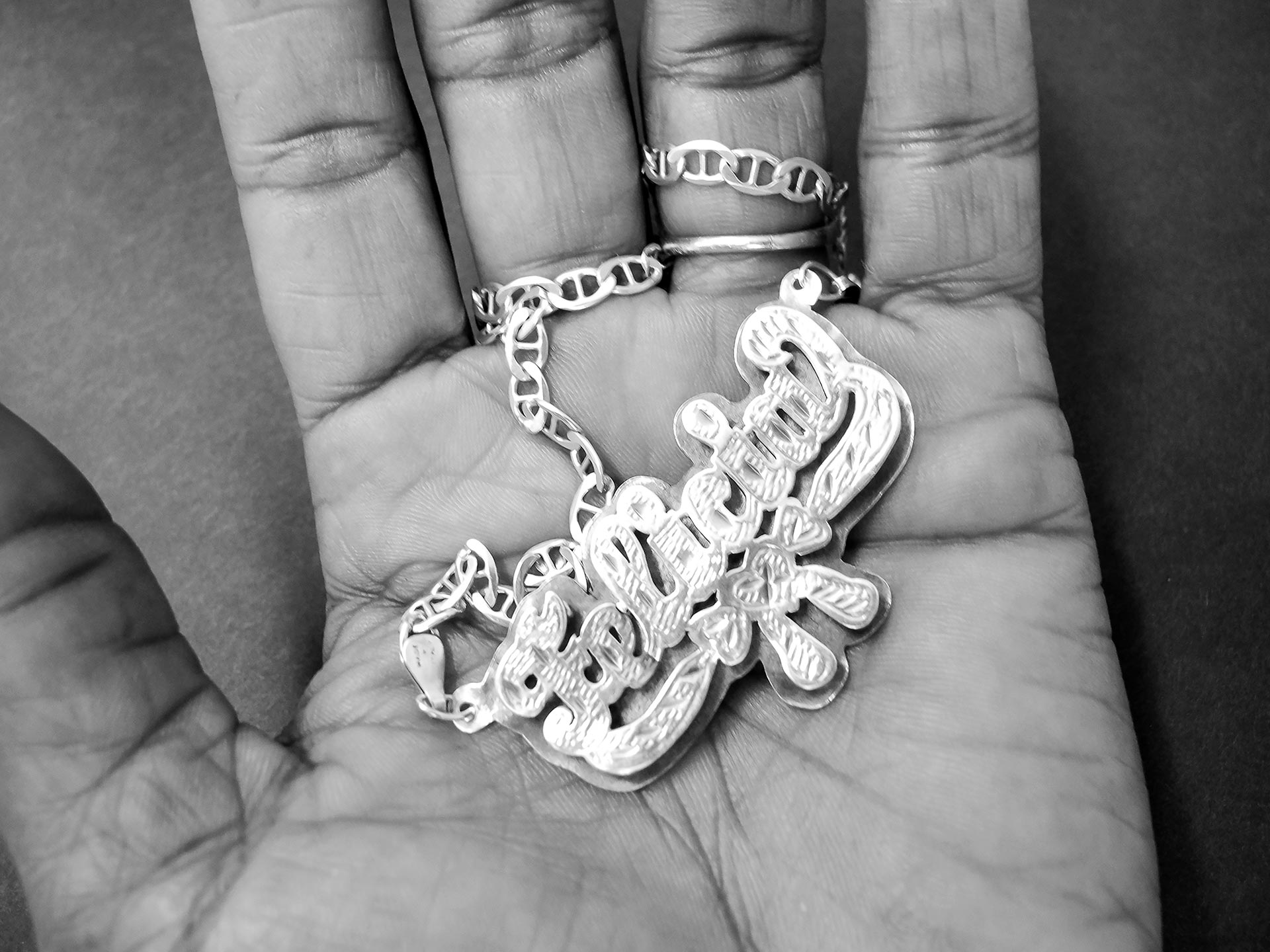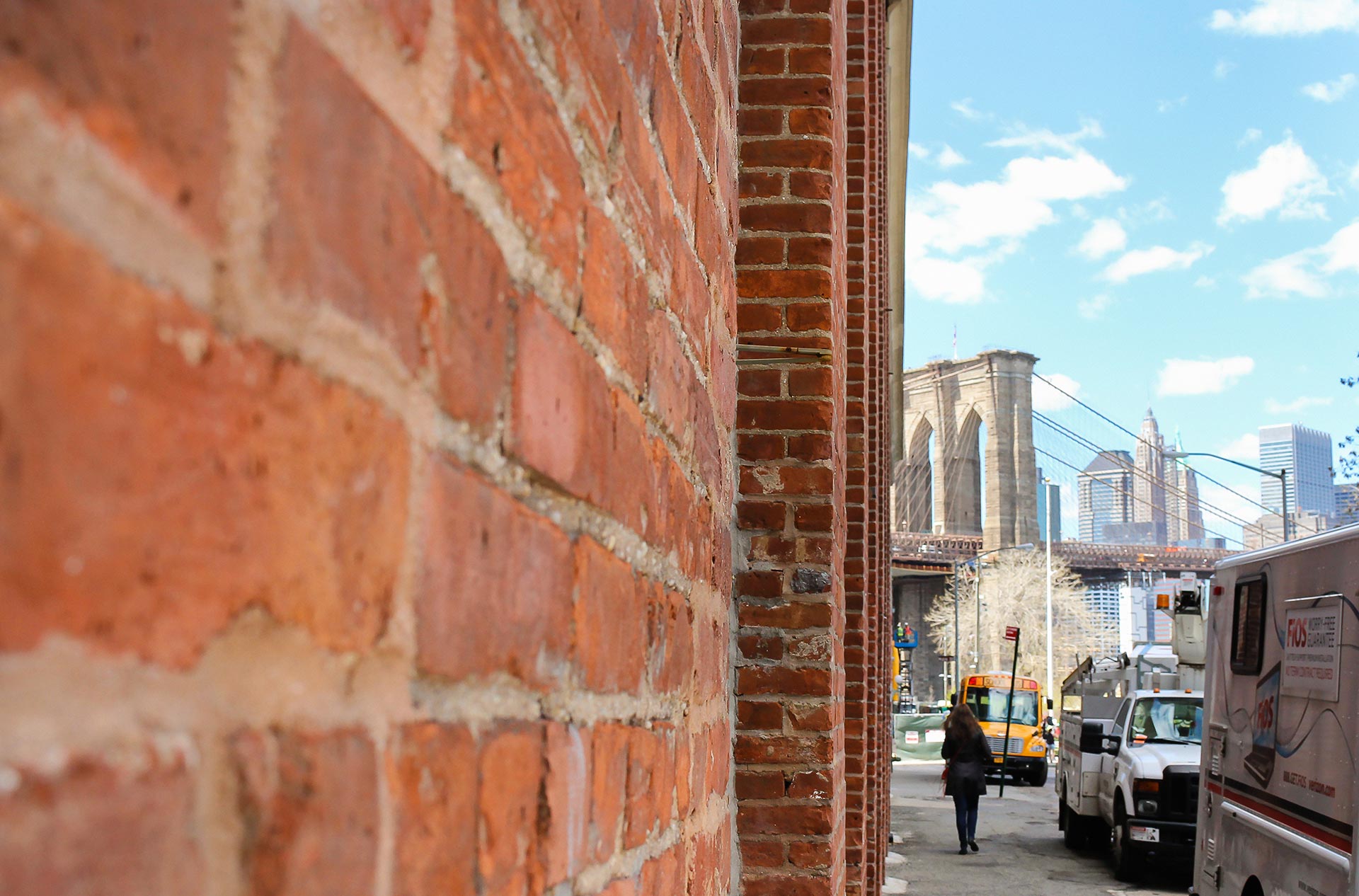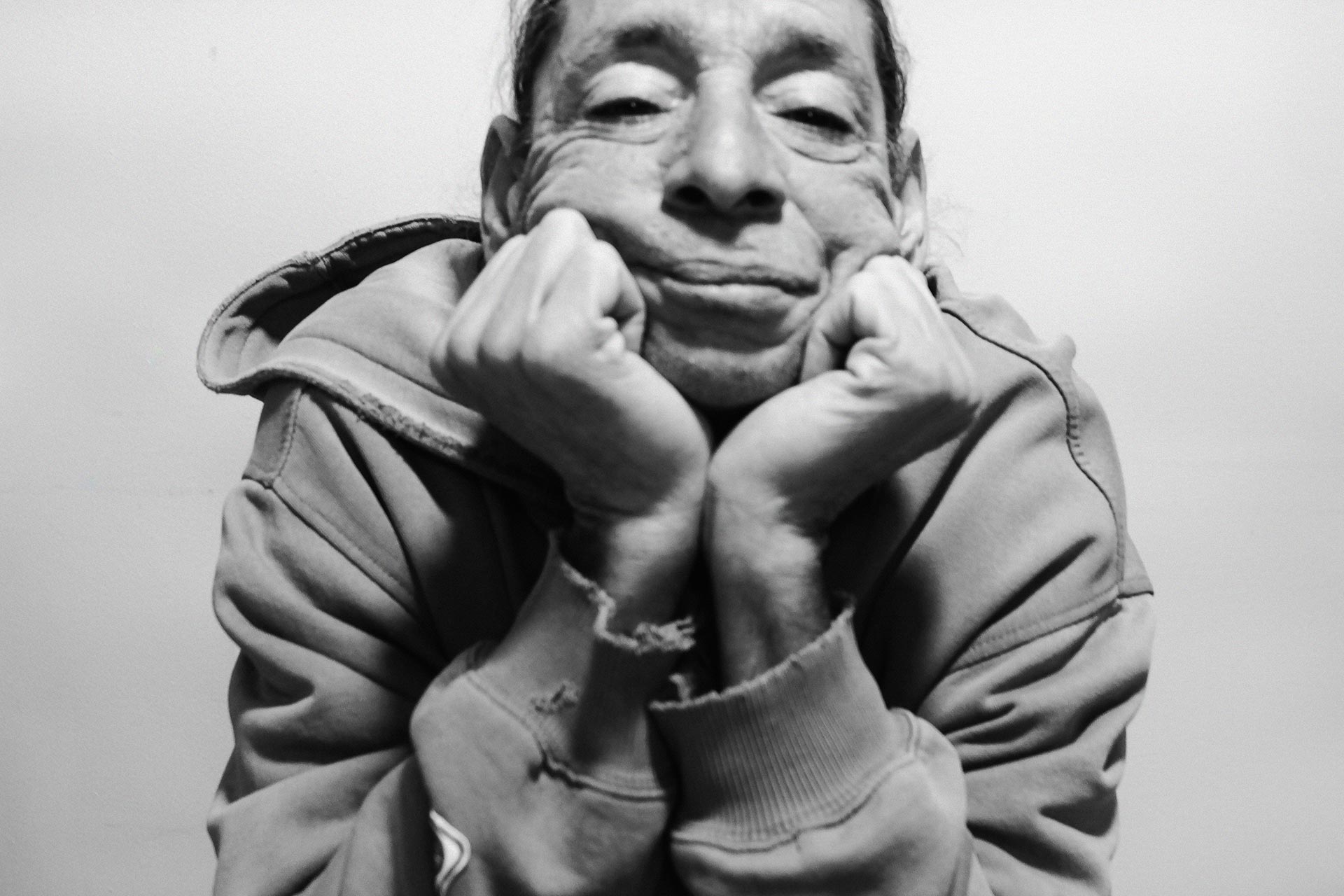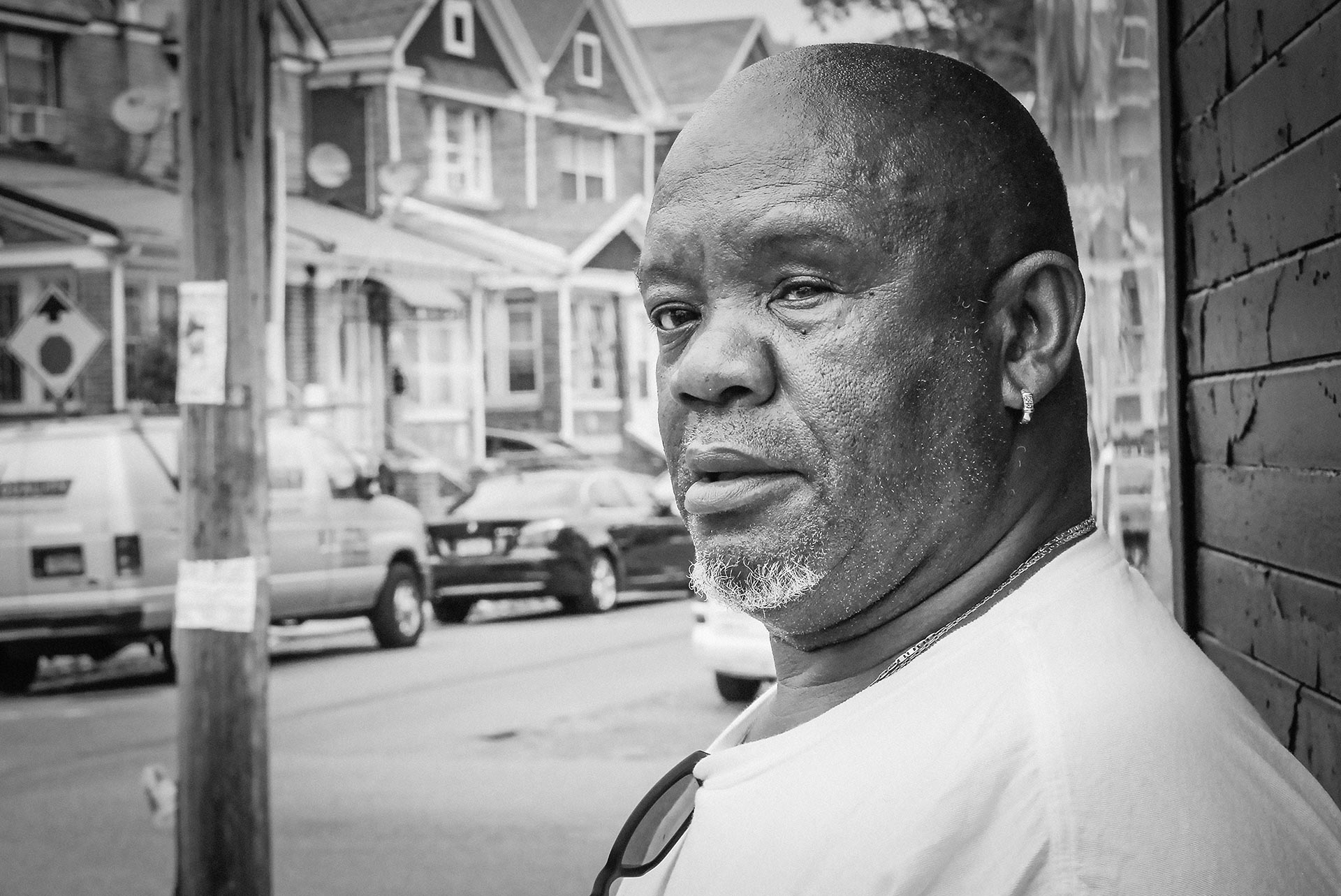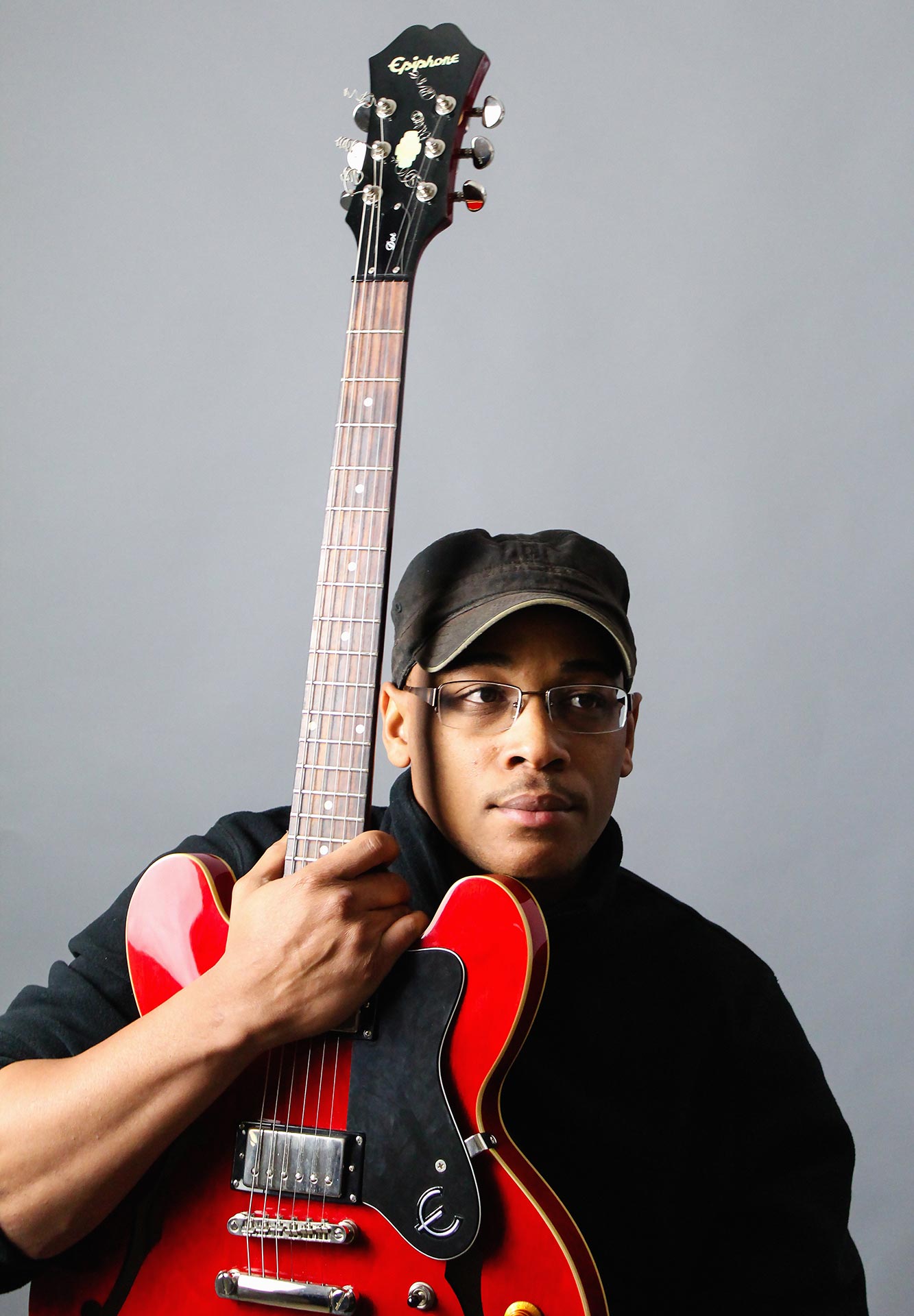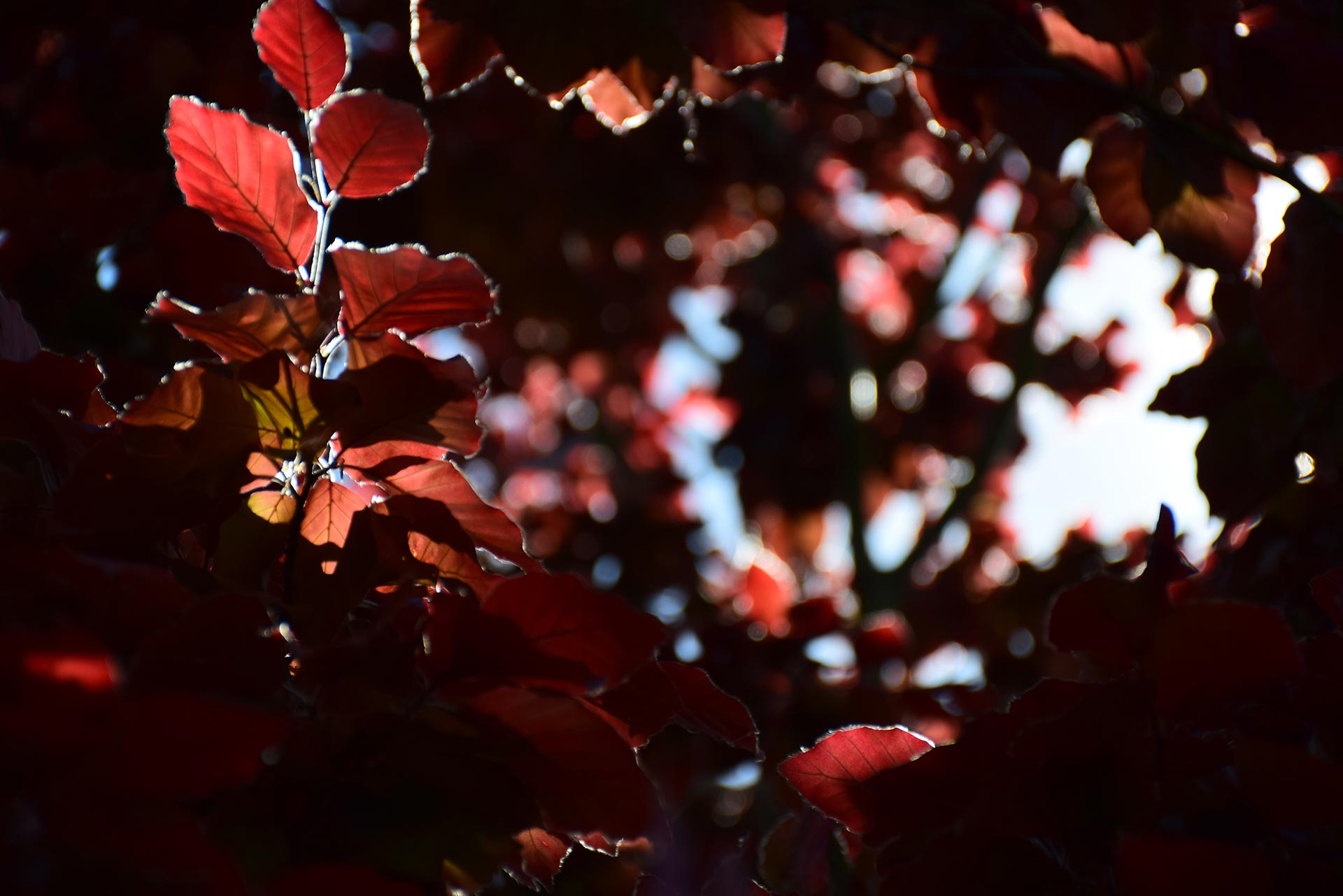A Story Behind Every Picture
A Story Behind Every Picture describes the work of the Josephine Herrick Project (JHP), which has taught photography to patients in veterans and civilian hospitals for 75 years. When the United States entered the Second World War in 1941, Josephine Herrick (1897-1972), a professional photographer, joined a women's volunteer organization and began teaching classes in photography to support the war effort. In 1944, she initiated programs in three veteran hospitals to aid the recovery of wounded servicemen by teaching them to use the camera and darkroom. After the war, Herrick founded Volunteer Service Photographers, Inc. (VSP), which organized programs in rehabilitation photography in 40 veteran and civilian hospitals nationwide. In 2013, the organization was renamed in honor of Herrick, whose pioneering work continues to enhance lives through photography. Today Josephine Herrick Project conducts 25 photography programs a year in the New York metropolitan area serving communities of veterans, youth with challenges, seniors and children with disabilities.
In rehabilitation photography there is a far greater magic, which lies in the realm of human lives. Its magic brings hope and purpose." ~Josephine Herrick, 1951
PART 1: This part of the exhibition tells the story of Herrick's life, which was devoted to the organization she founded.
JOSEPHINE'S CLEVELAND CHILDHOOD
The Herrick Children, ca. 1902, Courtesy Dorothy Herrick
Growing up, the three children of Frank and Josephine Pomeroy Herrick - Josephine Ursula, Theodore Pomeroy and Sherlock Andrews - probably endured a formal portrait sitting every year. Mr. Herrick was a prominent Cleveland lawyer, and the family's roots ran deep in American history. Josephine's first cousin, Myron T. Herrick, served as governor of Ohio, and another first cousin, Janet Pomeroy Avery, married John Foster Dulles, Secretary of State under President Dwight D. Eisenhower.
Josephine with Her Mother, August 1, 1915,
Courtesy Dorothy Herrick
This portrait of Josephine with her mother was taken in Washington, D.C., on Josephine's 18th birthday.
Josephine on Lake Erie, ca. 1910, Courtesy Dorothy Herrick
At an early age, Josephine took up photography as a hobby.
LIFE IN NEW YORK
Josephine U. Herrick, late 1920s, Courtesy Dorothy Herrick
After attending Bryn Mawr College and Western Reserve University (B.A. 1921), Herrick moved to New York City in 1923 to study photography. She took yearlong courses at the technically oriented New York Institute of Photography and from the Clarence H. White School of Photography, which trained photographic artists. Like many women who trained with Clarence White, Herrick established a commercial portrait studio.
Miss Nadejda Braganza, Vogue, August 1929
From 1928 to 1940, Herrick and the Princess Miguel de Braganza operated a commercial studio specializing in society portraits, such as this lovely profile view of the Princess' daughter, which appeared in Vogue two months before the stock market crashed. Born Anita Rhinelander Stewart, the Princess was a fixture of the society pages in her youth, having married a pretender to the Portuguese throne. By the time she teamed up with Herrick, she was a middle-aged mother of three, whose profligate husband had abandoned the family.
WOLRD WAR II
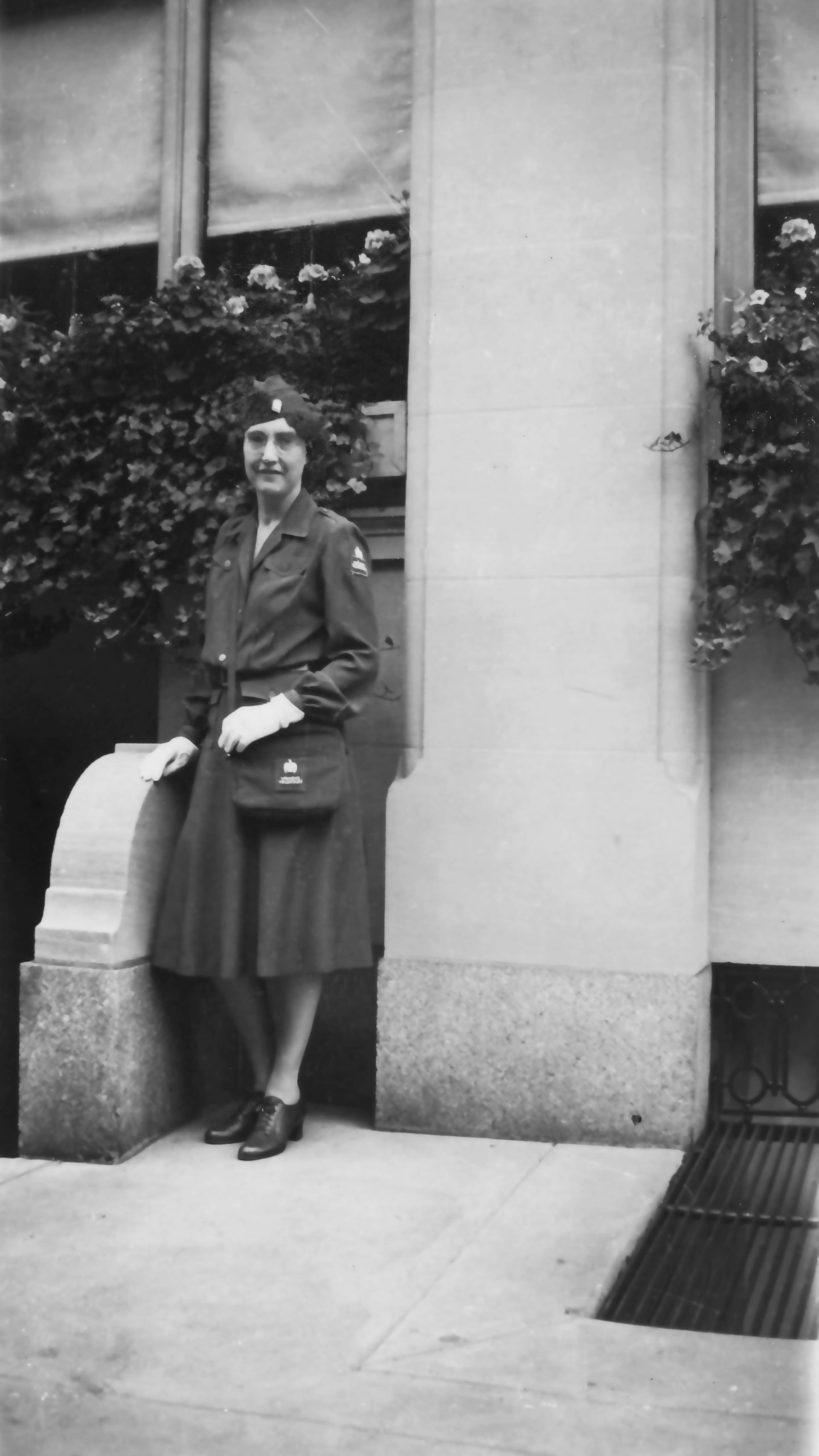
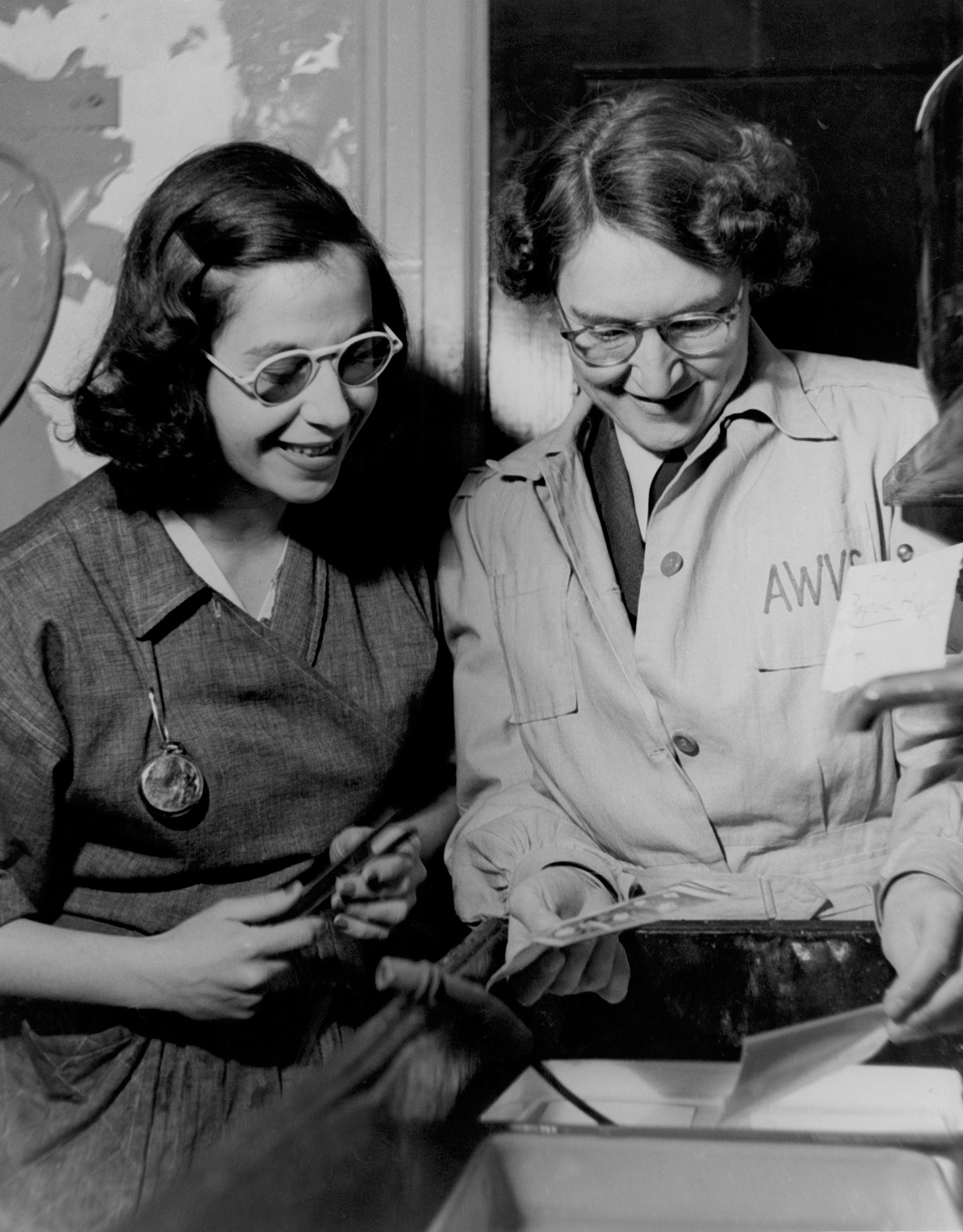
Josephine U. Herrick, 1941, Courtesy Dorothy Herrick
When the United States entered World War II, the American Women's Voluntary Services (AWVS) had 18,000 members who provided support services for the military, from running canteen kitchens to driving ambulances. Herrick, seen in this snapshot wearing an AWVS uniform, taught courses in "defense photography."
Herrick Instructs Jeanne Browning at the War Service Photography Headquarters, February 1943, Photograph by Sylvia Settel, JHP Archive
Herrick trained volunteers to aid the AWVS publicity department, offering them a five-week introductory course and an advanced course in flash technique and documentary photography.
Miss Josephine U. Herrick, Director of AWVS War Photography Service, demonstrates the correct method of taking portrait-snapshots to patients at St. Albans Naval Hospital, St. Albans, New York, January 1945, Photograph by Helen Johnston, JHP Archive
A Wounded Veteran Learns Photography, October 1947 , Photograph by Josephine U. Herrick, JHP Archive
As wounded men returned to lengthy stays in veteran hospitals, Herrick recognized a new role for photography in the war effort: learning photography could help give the convalescing veterans purpose and hope. Her proposal to the War Department was immediately accepted, and in 1944, she began training volunteers to teach photography at St. Albans Hospital in Queens, the Brooklyn Naval Hospital and Bethesda Naval Hospital in Maryland.
This series of photographs by Herrick documents a young man's experience with the camera at St. Albans Hospital.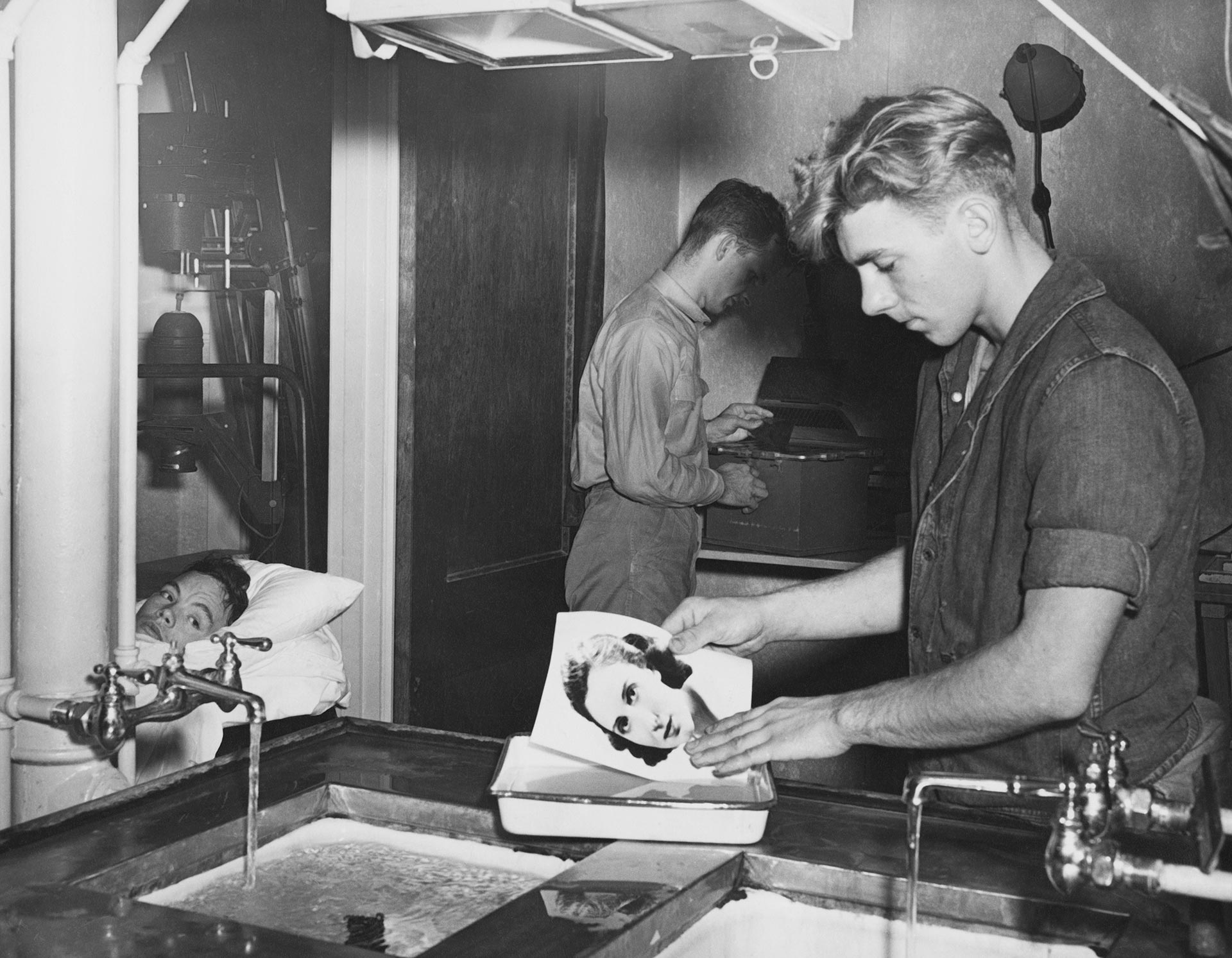
VOLUNTEER SERVICE PHOTOGRAPHERS
"Hospital Rehabilitation Photography," Universal Photo Almanac, 1948, Photographs and text by Josephine U. Herrick, JHP Archive
In 1946, as the AWVS was closing, Herrick founded the VSP to continue her pioneer work in rehabilitation photography. By 1954, there were 37 programs in veteran and civilian hospitals in eight states and Trinidad.
In an article for Universal Photo Almanac, Herrick explained the VSP program, explaining that the allure and fascination of photography improved morale and recovery for patients confined to beds or wheelchairs.
U.S. Camera Awards Josephine Herrick, 1949, JHP Archive
The opening in Rochester of the George Eastman House - a museum devoted to the history of photography and film - was celebrated with an awards dinner sponsored by U.S. Camera, the leading photography magazine of the day. Five awards were presented: three to inventors; one to Edward Steichen, Director of Photography at the Museum of Modern Art; and one to the VSP for its work in rehabilitation photography.
Photography, Just What the Doctor Ordered, Photography, October 1960, JHP Archive
VSP maintained a strong presence in the photographic press and attracted the support of leading photographers, including Edward Steichen, Margaret Bourke-White, Philippe Halsman and Ivan Dmitri.
The Patient Photographer, VSP Exhibition at IBM Gallery, 1963, JHP Archive
VSP regularly exhibited photographs by patients and awarded prizes for outstanding work. It also held exhibitions to introduce VSP to the general public. The most ambitious of these was held at the IBM Gallery of Arts and Sciences in midtown Manhattan.
Josephine U. Herrick Presents the Herrick Award to 10-year-old Paul Jackson, 1970,
JHP Archive
Until she died in 1972 at age 75, Herrick remained active in VSP activities. In 1970, she presented an award at the annual student contest held at the Museum of Natural History.
PART 2: This part of the exhibition presents outstanding examples of recent work by veterans.
Israel Smith, Services for the Underserved, Genesis Homes
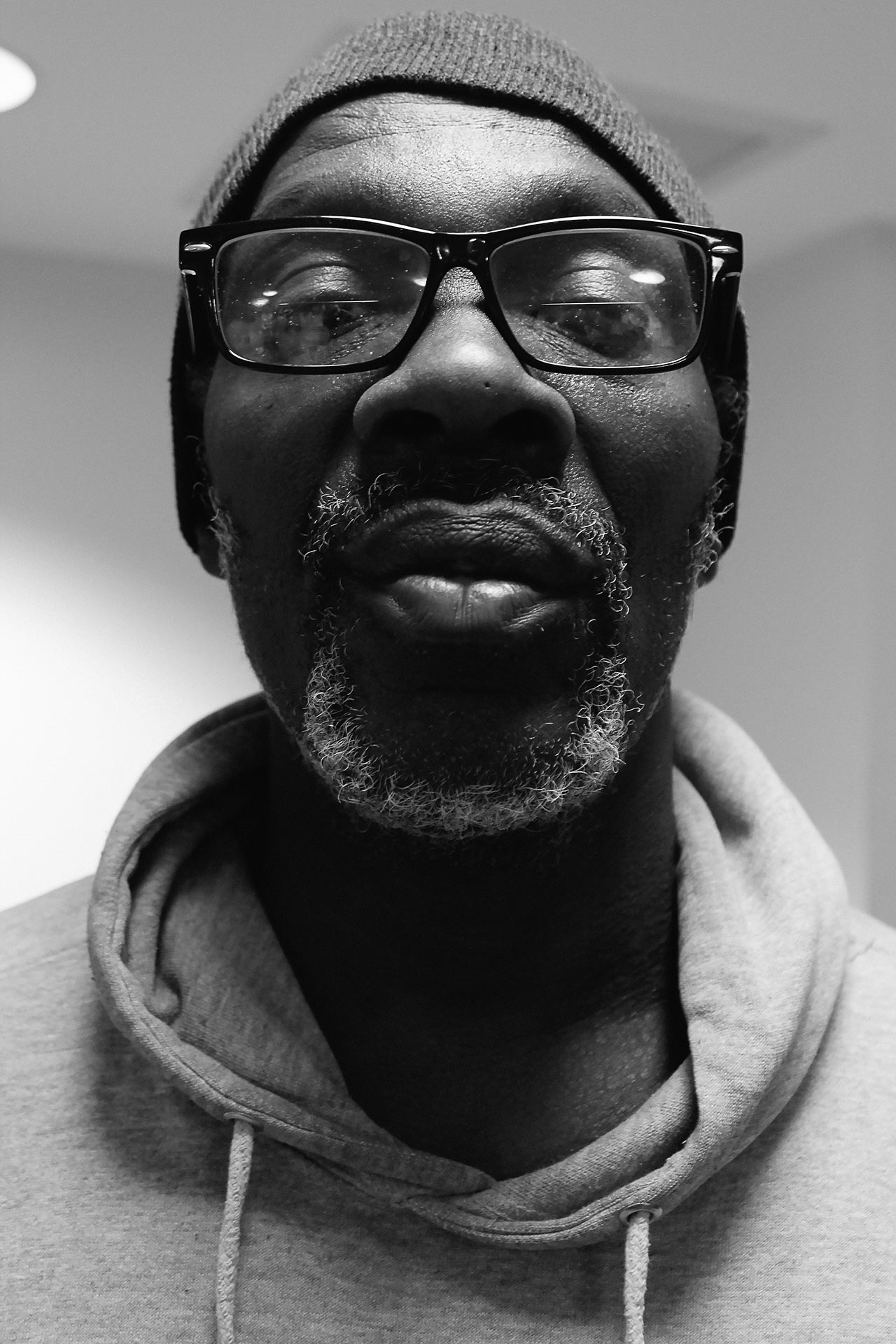
Left: Chris Wagner, Portland Vet Center; Right: Mark Kopdovicz, Services for the Underserved, Genesis Homes
Walter Baldaccini, Services for the Underserved, Knickerbocker Housing
Warren McGill, Brooklyn VA
Felicia Foster, Brooklyn VA
Wes Washington, Services for the Underserved, Knickerbocker Housing
Marilyn Fana, Services for the Underserved, Genesis Homes
Josef P, Queens Vet Center
John Thompson, Queens Vet Center
Franklin McMickens, Unique Photo Program
Ryan Hemensway, Portland Vet Center
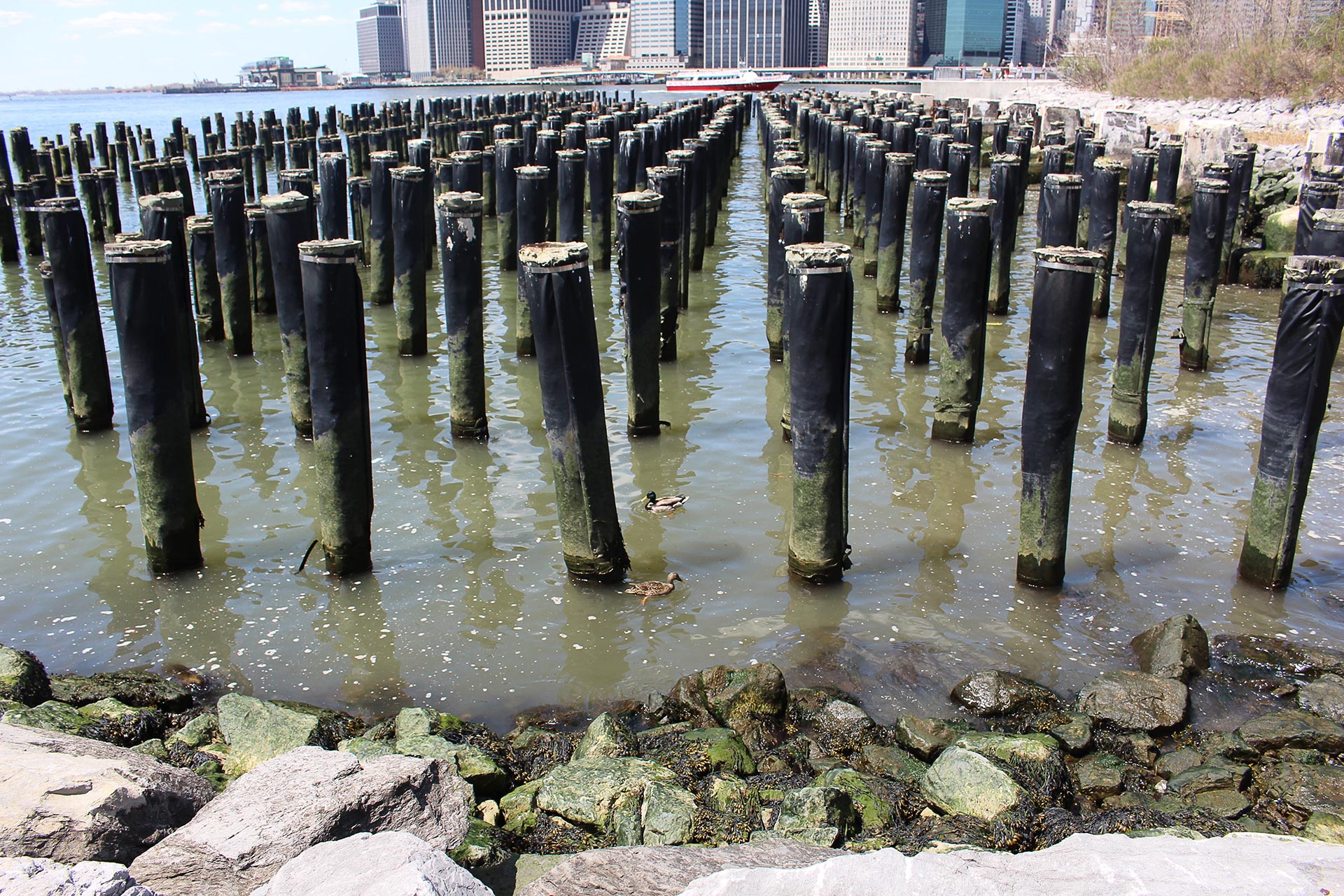
Larry Woods, Services for the Underserved, Knickerbocker Housing
Copyright 2017, Josephine Herrick Project, All rights reserved
